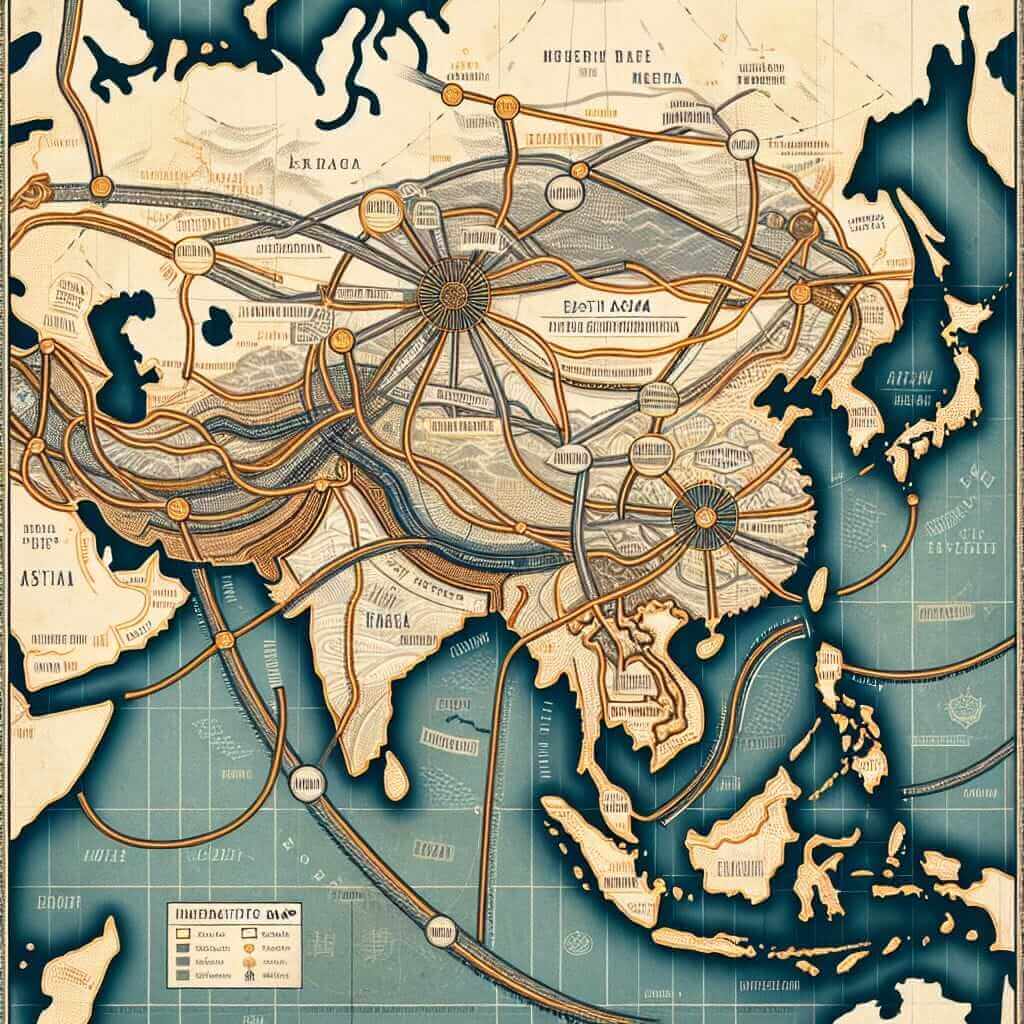Introduction
The IELTS Reading section demands not only proficient reading skills but also the ability to comprehend, analyze, and accurately answer questions based on the given text. Topics like the “Historical significance of the Silk Road” often appear in the exam due to their rich historical, cultural, and socio-economic content. This article will first explore the importance of the Silk Road, followed by a practice Reading passage complemented with questions and answers designed to emulate the actual IELTS exam.
Practice Reading Passage: The Historical Significance of the Silk Road
The Silk Road: An Ancient Network of Trade Routes
The Silk Road, a vast network of trade routes extending across Asia to Europe, played an instrumental role in the cultural, economic, and political interactions between civilizations from the 2nd century BCE to the 18th century. Its influence on commerce, culture, and communication cannot be overstated.

Commerce and Trade
The Silk Road derived its name from the lucrative trade in silk that was carried out along its length. However, it was not limited to the trade of silk. Spices, precious metals, textiles, and other valuable goods traveled these routes. Merchants and traders facilitated exchanges that led to significant economic growth and the prosperity of cities along the path.
Cultural Exchange
Beyond goods, the Silk Road was a conduit for cultural exchange. It facilitated the spread of ideas, philosophies, religious beliefs, and even culinary practices. The interaction of different cultures enriched each society, fostering advancements in art, science, and technology. Buddhism, for instance, spread from India to China and further into East Asia via the Silk Road.
Political Implications
The Silk Road also had profound political implications. It was a diplomatic channel through which alliances were formed, and mutual understandings between distant empires were established. The trade routes encouraged political stability and the establishment of lucrative dynasties who controlled these vital economic networks.
The Decline
By the 18th century, the significance of the Silk Road diminished due to the advent of sea routes and political upheavals. The discovery of a sea passage to Asia by European explorers marked a new era of direct maritime trade, reducing the reliance on overland routes.
The Legacy
Today, the legacy of the Silk Road is revered for its historical significance. It represents a critical period of proto-globalization, where diverse cultures, ideas, and innovations merged, laying the foundational pillars for the modern world.
IELTS Reading Practice Questions
Multiple Choice
-
What was the primary goods traded on the Silk Road?
- A. Spices
- B. Textiles
- C. Precious metals
- D. Silk
-
Which religion spread significantly due to the Silk Road?
- A. Buddhism
- B. Christianity
- C. Islam
- D. Hinduism
True/False/Not Given
- The Silk Road commerce exclusively involved the trade of silk. (True/False/Not Given)
- The Silk Road ceased to be significant in the 19th century. (True/False/Not Given)
- Maritime trade routes completely replaced the Silk Road by the 18th century. (True/False/Not Given)
Matching Information
Match the following aspects with their corresponding points in the passage:
-
i. Economic prosperity
-
ii. Cultural exchange
-
iii. Political implications
-
iv. Decline of the Silk Road
-
A. The advent of sea routes.
-
B. The spread of ideas and philosophies.
-
C. The role of merchants and goods.
-
D. Formation of alliances and diplomatic channels.
Answer Key and Explanations
- D. Silk – The Silk Road is named for its trade in silk, highlighting its primary commodity.
- A. Buddhism – The passage explicitly mentions Buddhism spreading from India to China via the Silk Road.
- False – While silk was a primary good, various other goods like spices and textiles were also traded.
- Not Given – The passage mentions the Silk Road ceased to be significant by the 18th century, but does not specify the 19th century.
- False – The passage notes that maritime routes became significant but does not state they completely replaced the Silk Road by the 18th century.
Matching Information:
- i. Economic prosperity – C
- ii. Cultural exchange – B
- iii. Political implications – D
- iv. Decline of the Silk Road – A
Common Mistakes and Tips
Common Mistakes:
- Misinterpreting the main idea due to unfamiliarity with historical contexts.
- Overlooking specific details mentioned in the passage.
- Misunderstanding the question types, especially in True/False/Not Given sections.
Tips for Improvement:
- Focus on skimming and scanning techniques to locate relevant information efficiently.
- Practice with a variety of historical passages to become comfortable with similar content.
- Pay attention to keywords in questions; they often hint at where to find answers in the passage.
Vocabulary Highlights
Key Vocabulary from the Passage:
- Lucrative (adj) – producing a significant profit.
- Pronunciation: /ˈluːkrətɪv/
- Conduit (n) – a means of transmitting or distributing.
- Pronunciation: /ˈkɒndjʊɪt/
- Proto-globalization (n) – early phases of globalization.
Grammar Focus
Complex Sentences:
- Use subordinate clauses to add detail and create complex structures.
- Example: “The Silk Road, which derived its name from the lucrative trade in silk, also facilitated the exchange of other valuable goods.”
Final Advice
To excel in the IELTS Reading section, immerse yourself in various historical and academic texts. Regular practice with passages like the one above will hone your reading and comprehension skills, significantly boosting your chances of a high score.
For further reading on related topics, you can explore articles such as Historical Analysis of Ancient Trade Routes and their Impacts and Historical Significance of Ancient Trade Networks.
Remember, consistency and strategic practice are key to mastering the IELTS Reading section. Good luck!